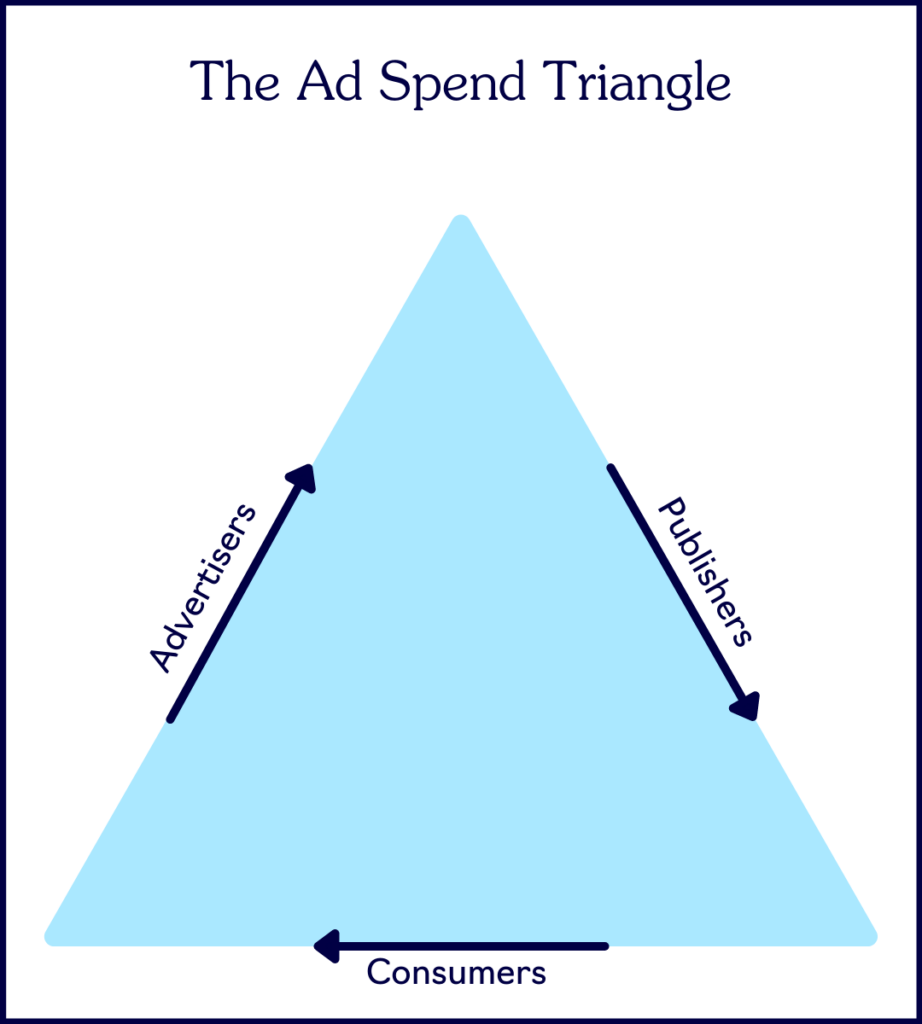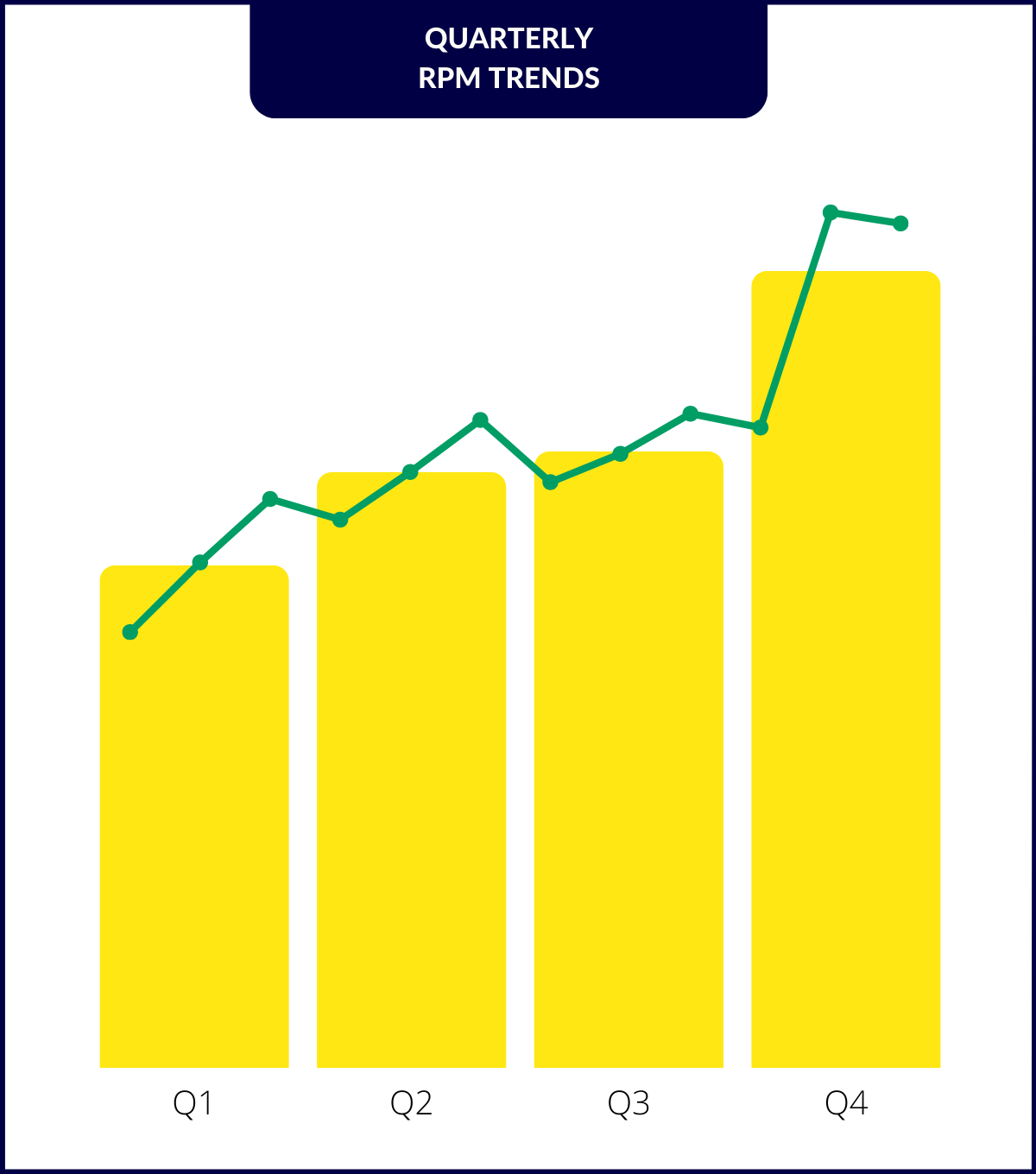MAXIMIZE MY REVENUE / AD REVENUE
How the economy impacts advertiser spending and RPM
MEMBER EXCLUSIVE
There’s a symbiotic relationship between advertisers, consumers, and creators.
Advertisers want to connect with your audience as potential consumers of their product, and they pay for your audience’s attention through advertising.
It’s a big triangle, and when one part of the triangle is affected, the others are also affected. And all of them can be affected in different ways by shifts in economic and political conditions, such as wars, epidemics, or when shipping and supply chain backups cause products and components to be unavailable or scarce.

When conditions are good, consumers are more willing to spend money on products and services. The specific products and services your readers seek influence the types of ads and where advertisers buy them. As these advertising opportunities fill up, the scarcity drives up the price advertisers are willing to pay, increasing your RPM.
When economic conditions are experiencing setbacks like pandemics, supply chain issues, and consumers spending less on certain products, advertisers spend less, leading to lower RPMs for you.
How advertisers decide to spend their money
As advertisers move to meet the demands of the shifting market, they move their dollars to where it makes the most sense.
Advertising motivations are pretty straightforward. Advertisers want to make consumers aware of their products just like you want to make audiences aware of your content. And just like you seek a higher ranking in search engines to convince readers to read your article, an advertiser’s job is to convince buyers to buy their product.
Why brands choose digital advertising
There are several benefits to digital advertising that make it flexible and appealing to advertisers during uncertain economic circumstances.
- It’s very efficient. It’s relatively inexpensive compared to buying TV ads or billboards.
- It’s highly targeted. More than any other form of advertising, advertisers can reach exactly the people they want to reach.
- It’s very measurable. Advertisers can see the impact of what they spend and how it helps drive their business.
- It’s easy to turn on and off. Once you’ve bought an ad in a magazine or a billboard, you own it. But if something isn’t working right with digital ads, you can turn it off right now. Sometimes that can be a negative, but usually, it means buyers feel more comfortable about investing in something they can change their mind about later.
These benefits make digital advertising a great place for marketers to spend their money. When deciding how to maneuver during economic shifts, digital advertising tends to remain at the forefront but sees some volatility.
Brands base digital advertising spending on quarters & fiscal years
You may see your RPM spike or drop due to fluctuations in your traffic makeup but it can also be due to larger industry changes in advertiser spending throughout the month and year.
At the beginning of each quarter, advertisers reset budgets and allocate funds for the rest of the quarter. And generally, at the end of each quarter (and especially as we approach the holidays at the end of the year), advertisers are eager to spend the remainder of their budget, so RPMs increase.
Some advertisers follow a different fiscal year, starting new budgets in July. This means for many brands, July is similar to January, with lower ad spending in July as they test and ramp up through the rest of the year.
Reasons advertisers cut back on spending.
Several factors and events affect advertiser spending and, consequently, creator’s RPMs. Inflation and recession, availability of labor and supplies, wages, epidemics, and government activity – anything that affects how consumers spend also affects how advertisers spend.
There are several reasons advertisers will cut back on spending:
- They don’t have products/services to sell at the moment. Either stores are out of stock of their products, the stores that sell their products are closed, or world events impact consumer demand for their product (like when conferences and concerts closed during the height of the COVID pandemic.).
- They don’t need to advertise to sell products. Their products are in such high demand that advertising would drive demand that they can’t fulfill.
- They’re trying to avoid crisis-related content. They don’t want to be seen as capitalizing on a crisis like COVID or the Ukraine war.
Advertisers are notoriously risk-averse. They don’t want to spend money unless they’re certain to make a return on whatever they spend.
Imagine selling ads for a travel agency during a worldwide travel ban. It wouldn’t be a very lucrative investment as most consumers aren’t even going to be interested in traveling and aren’t seeking deals and discounts on travel. And that’s what we saw during COVID-19 travel bans and general consumer fear about travel.
In a recession or a challenging economy, companies in industries that don’t have a strong product or demand will advertise less.
Changes in the availability of products or consumer attitudes toward spending on specific products mean advertising shifts occur that affect RPM. Some brands spend more and others spend less to be flexible with the market state. As advertisers adjust to shifting marketing demands and economic conditions, be prepared for RPMs to shift.
